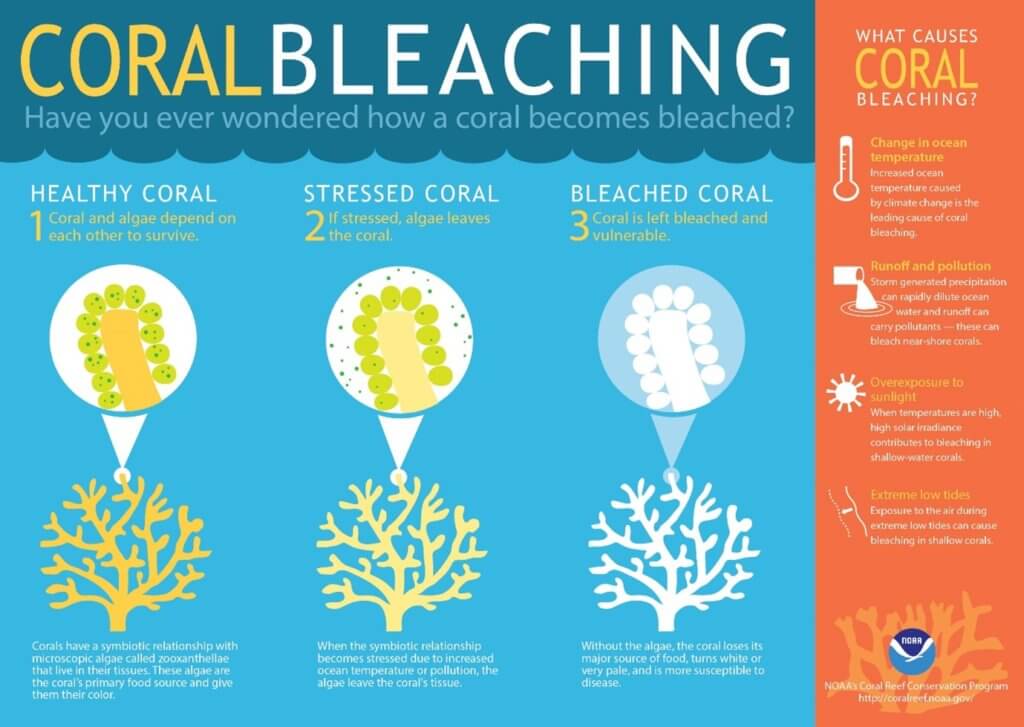How does climate change destroy reefs and trenches?
This is an important question because if we know how climate change affects these environments, we can identify ways to prevent further damage and to help these environments to bounce back. But before we dive into the how, check out this question 'will all the reefs die?'
It’s good to remember that not all reefs will be destroyed! However, climate change is increasing water temperatures and acidity which impacts the species that call reefs and trenches home.
In tropical coral reefs, warmer waters, heatwaves, freshwater flooding events, and changes in nutrients from pollution cause coral bleaching. Corals are skeletons, built from calcium and carbonate from the water around them, and are home to algae which provide nutrients to keep the coral healthy and gives the coral a brown/golden colour. When the water is too warm, the relationship between coral and algae breaks down and the stressed coral expels the algae, meaning it loses its primary food source and colour - this is known as coral bleaching. Corals are also changing in response to another impact of climate change, called ocean acidification, where the pH of the water lowers as the ocean absorbs carbon dioxide. This makes calcium minerals less available to animals including corals, that need these minerals to grow shells or skeletons. Unhealthy coral is also stressful for other species that depend on the reef for food and shelter.

To hear more about coral reefs (and how jellyfish move!), have a listen to this episode of the Dr Karl Podcast where the Chief Scientist of the Great Barrier Reef Marine Park Authority explains how climate change is affecting the Great Barrier Reef.
In temperate reefs (with kelp and seaweeds) increased water temperatures with lower nutrients are preventing some species from growing and encouraging other species to evolve or move. Off Tasmania’s east coast, the warm waters of the East Australian Current have been moving south, reducing the giant kelp and introducing other species usually found in places with warmer climates. To help restore the reefs, researchers at the University of Tasmania have been successful in planting kelp that is more resistant to warmer temperatures - check out this video for more details.
Deep sea trenches are also experiencing increased temperatures and ocean acidification. Some deep-sea trench dwelling species will be unable to adapt to these changes, whereas other species may move into these environments. Deep sea trenches and their species recycle and channel nutrients back to the surface, and changes in these environments is likely to have flow on effects across the whole water column (from the seafloor to the surface). Extra human pressures from pollution, deep sea drilling for oil and gas, mining and fishing will add further stress to these environments. Limiting human activities in the deep sea will give these creatures the best chance to adapt to change, and right now, the United Nations are currently discussing an agreement known as the Treaty for Marine Biodiversity of Areas Beyond National Jurisdiction, to improve ocean management and increase protection.











